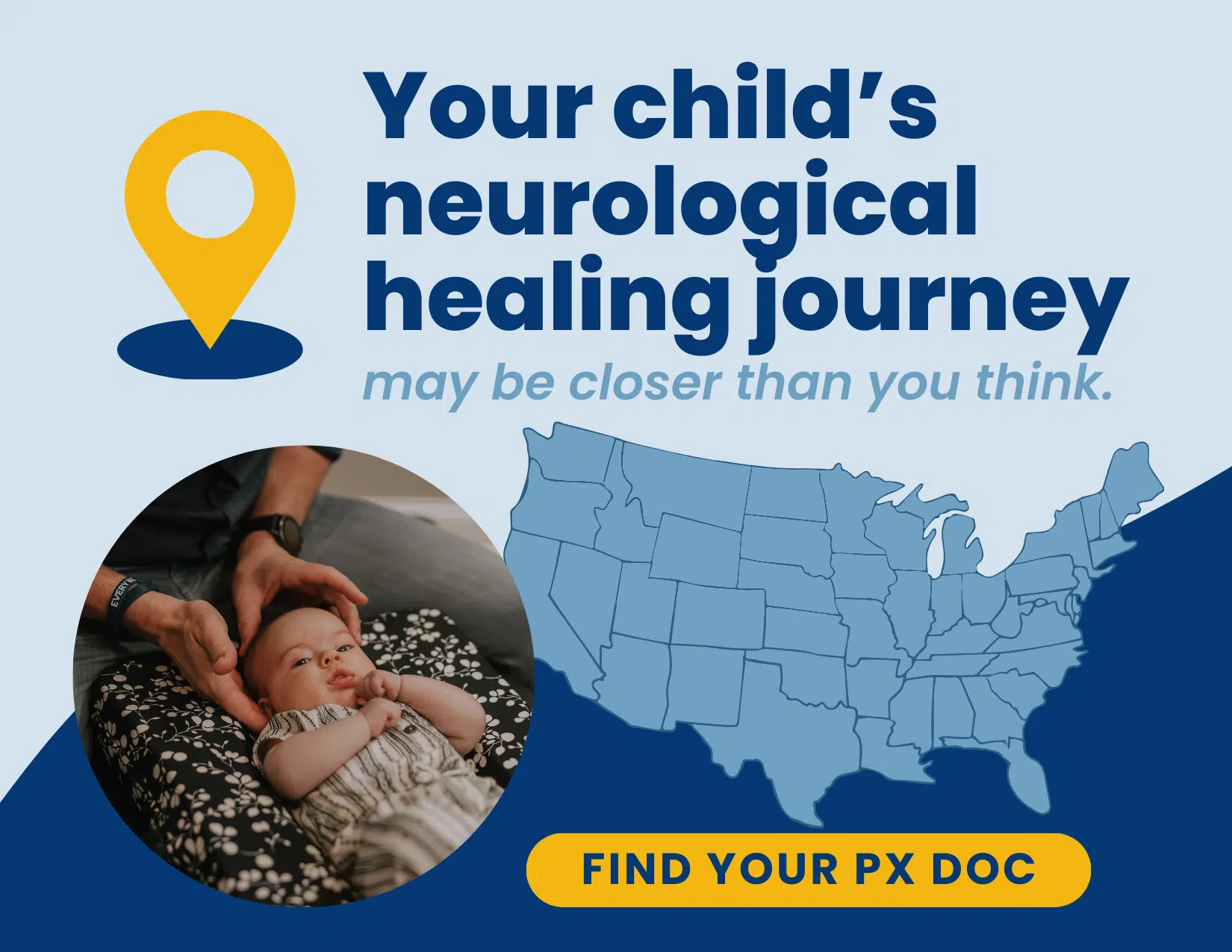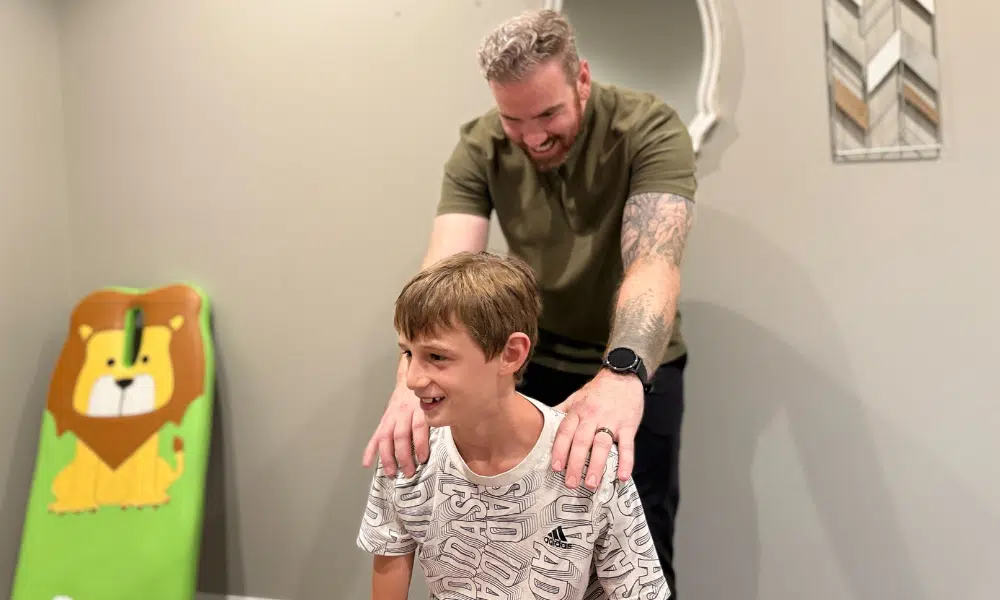In today’s high-stress world, an alarming number of children struggle with emotional and behavioral issues that can derail a parent’s dreams for them.
Recent studies show that 1 in 6 U.S. children aged 2–8 years have a diagnosed mental, behavioral, or developmental disorder. Even more concerning, suicide is now the second leading cause of death for youth aged 10-24. Something is clearly amiss in how we approach emotional development in early childhood.
While conventional wisdom focuses on surface-level interventions, a growing body of research points to a deeper root cause: nervous system dysfunction.
So what if optimizing their neurological function is the key to unlocking your child’s emotional well-being? What if you could set them up for a lifetime of emotional resilience by identifying and addressing nervous system imbalances early on?
In this article, we’ll explore the nervous system’s critical role in emotional development and reveal a cutting-edge approach helping families get to the root of their children’s struggles. Get ready to discover a path to lasting emotional health for your child.
Understanding Emotional Development in Early Childhood
Emotional development is how children learn to understand, express, and manage their emotions. It involves building emotional intelligence, which includes skills like recognizing feelings, showing empathy, controlling impulses, and coping with challenges. For most children, healthy emotional development lays the foundation for overall well-being and future success.
From birth to age 5, children reach many key milestones in their emotional journey:
- Developing a sense of trust and security through responsive caregiving (0-12 months)
- Expressing a range of emotions and learning to self-soothe (12-24 months)
- Engaging in cooperative play and showing early signs of empathy (2-3 years)
- Managing emotions with support and gaining confidence in their abilities (3-5 years)
While these milestones provide a general roadmap, it’s important to recognize that every child develops at their own pace. Various factors, including genetics, environment, and experiences, can influence a child’s emotional growth.
Genetics also influence a child’s temperament, which is their natural predisposition toward certain emotions and behaviors. Some children may be more sensitive or reactive, while others are more easygoing. However, genes are not destiny; environmental influences can shape how these inborn traits are expressed.
A child’s environment, including home life, relationships, and community, can significantly impact emotional development. Factors such as responsive parenting, secure attachment, and exposure to stressors like poverty or trauma can all shape a child’s emotional landscape.
Experiences, both positive and negative, also mold a child’s emotional world. Consistent, nurturing interactions with caregivers promote feelings of safety and trust. On the other hand, adverse experiences like neglect or abuse can lead to emotional challenges that may persist into adulthood if not addressed.
The Nervous System’s Role in Emotional Development in Children
The nervous system, a complex network of nerves and neural pathways that governs every aspect of physical, mental, and emotional functioning, is at the core of a child’s emotional development. The autonomic nervous system (ANS) is crucial in regulating big emotions and stress responses.
The ANS consists of two main branches: the sympathetic nervous system (SNS) and the parasympathetic nervous system (PNS). The SNS, often called the “fight or flight” response, activates during stress or perceived danger. It increases heart rate, blood pressure, and muscle tension, preparing the body for action.
In contrast, the PNS, or the “rest and digest” response, promotes relaxation, calm, and restoration.
Ideally, these two branches work together harmoniously, like a well-choreographed dance. The SNS provides the energy and focus needed to tackle challenges, while the PNS helps the body recover and maintain balance. However, emotional dysregulation can occur when the SNS becomes overactive and the PNS is underactive.
The vagus nerve, the longest cranial nerve in the body, is a key player in this delicate balance. Often called the “communication superhighway” between the brain and the body, the vagus nerve helps regulate many critical functions, including heart rate, digestion, and immune response. Importantly, it also plays a vital role in emotional regulation by activating the PNS and promoting feelings of calm and safety.
Children can more easily manage stress, cope with big emotions, and return to equilibrium after a challenging experience when the vagus nerve functions optimally. However, when vagus nerve dysfunction occurs in response to external stressors, it’s ability to regulate emotions can be compromised.
Subluxations, or neurological misalignments, can pressure the nerves and disrupt communication between the brain and body. This can lead to an overactive SNS and underactive PNS, creating a state of chronic stress and emotional reactivity. Dysautonomia, or imbalance in the ANS, can further exacerbate these issues, leading to a host of emotional and behavioral challenges.
“The Perfect Storm”: Factors Contributing to Neurological Dysfunction
While the nervous system is incredibly resilient, it is also vulnerable to various stressors that can disrupt its delicate balance. Today, children are increasingly exposed to what we refer to as “The Perfect Storm” of factors and stressors that can contribute to neurological dysfunction and emotional challenges.
One significant factor is prenatal stress and maternal anxiety. Studies have shown that when mothers experience high levels of stress during pregnancy, their children are more likely to develop emotional and behavioral issues later in life. This may be due to the impact of stress hormones on the developing fetal nervous system.
Birth interventions and trauma can also play a role in neurological dysfunction. Procedures such as C-section deliveries, forceps, and vacuum extractions can put excessive strain on a baby’s delicate neck and spine, leading to subluxations that disrupt nerve function. Even “normal” vaginal births can influence emotional development in children, particularly if there are complications like prolonged labor or cord compression.
Early life stressors, such as adverse childhood experiences (ACEs), environmental toxins, and poor diet and nutrition, can further compound these issues.
Consequences of Impaired Emotional Development in Children
When children struggle with emotional development due to neurological dysfunction, the consequences can be far-reaching. They may experience behavioral issues, such as aggression, impulsivity, or withdrawal. Social difficulties, including trouble making friends or reading social cues, are also common.
Learning challenges, such as difficulty focusing, retaining information, or regulating emotions in the classroom, can impact academic success. Mental health concerns, including anxiety, depression, and trauma-related disorders, may also develop.
These challenges can ripple effect throughout a child’s life, impacting their relationships, self-esteem, and overall well-being. Without appropriate intervention and support, emotional difficulties in early childhood can persist into adolescence and adulthood, leading to ongoing struggles.
The PX Docs Approach: Neurologically-Focused Chiropractic Care
At PX Docs, we recognize the nervous system’s critical role in emotional development and overall health. Therefore, our approach centers on identifying and addressing neurological dysfunction and determining how to restore optimal functioning.
The first step in our process is to conduct a thorough assessment using advanced technology, such as:
- INSiGHT Scans, which measure heart rate variability, postural analysis, and thermal imaging to identify areas of nervous system stress and imbalance
- Physical examinations to detect subluxations and other structural issues that may be impacting nerve function
Based on these findings, our trained pediatric chiropractors develop a personalized care plan to restore optimal nervous system function. This may include:
- Specific adjustments to correct subluxations and relieve pressure
- Therapies to stimulate the vagus nerve and promote parasympathetic dominance, such as CranioSacral therapy or NeuroEmotional Technique
- Home exercises and strategies to support emotional regulation and resilience
By addressing the root cause of neurological dysfunction, rather than simply managing symptoms, our approach helps children build a foundation for lifelong emotional well-being. We’ve seen countless success stories, from infants who overcome colic and reflux to older children who develop greater emotional control and social skills.
Additional Strategies for Supporting Emotional Development
While chiropractic care can be a powerful tool for promoting emotional well-being, it is just one piece of the puzzle. If you have a child crying for no reason, knowing some other strategies can help support and encourage your child is helpful.
- Creating a nurturing, responsive environment that promotes feelings of safety and security
- Building strong, healthy attachments through consistent, attuned caregiving
- Encouraging emotional expression and validating children’s feelings
- Teaching and modeling emotional regulation skills, such as deep breathing, mindfulness, and problem-solving
By combining Neurologically-Focused Chiropractic Care with these supportive strategies, parents can give their children the best possible foundation for emotional health and resilience.
A Path to Emotional Well-Being with PX Docs
By understanding the critical role of the nervous system in emotional regulation, and the factors that can contribute to neurological dysfunction, parents and caregivers can take proactive steps to support their children’s healthy development.
Neurologically-Focused Chiropractic Care, such as that provided by PX Docs practitioners, offers a safe, effective way to address the root causes of emotional challenges and promote optimal nervous system function.
Suppose you suspect that your child may be struggling with emotional challenges related to neurological dysfunction. In that case, we encourage you to visit the PX Docs Directory and find a qualified practitioner near you. Your child can overcome emotional obstacles and thrive with the right support and care.





